Identify the following compounds :
i. C6H6(A) 2H2SO4−−−−→ (B) 1.NaOH,540K−−−−−−−−−→2.HCI (C)
ii. 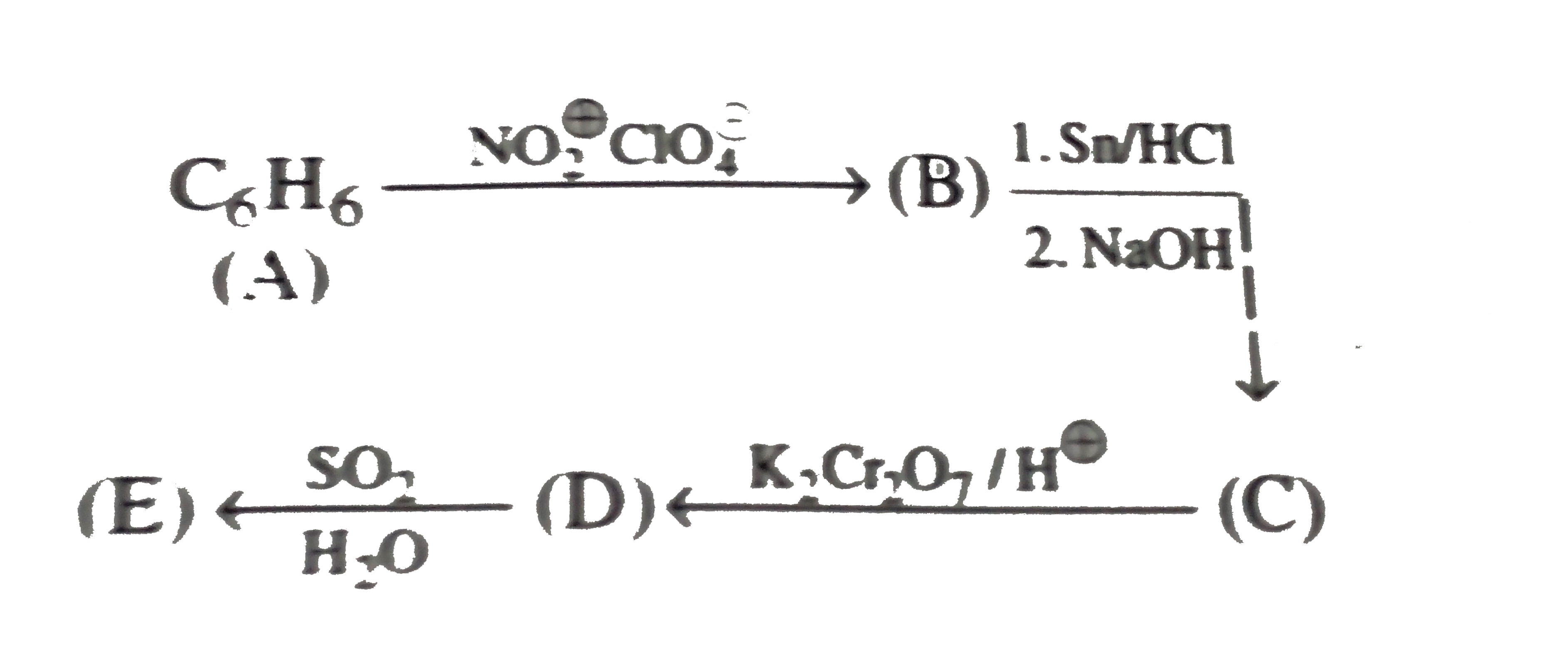
iii. 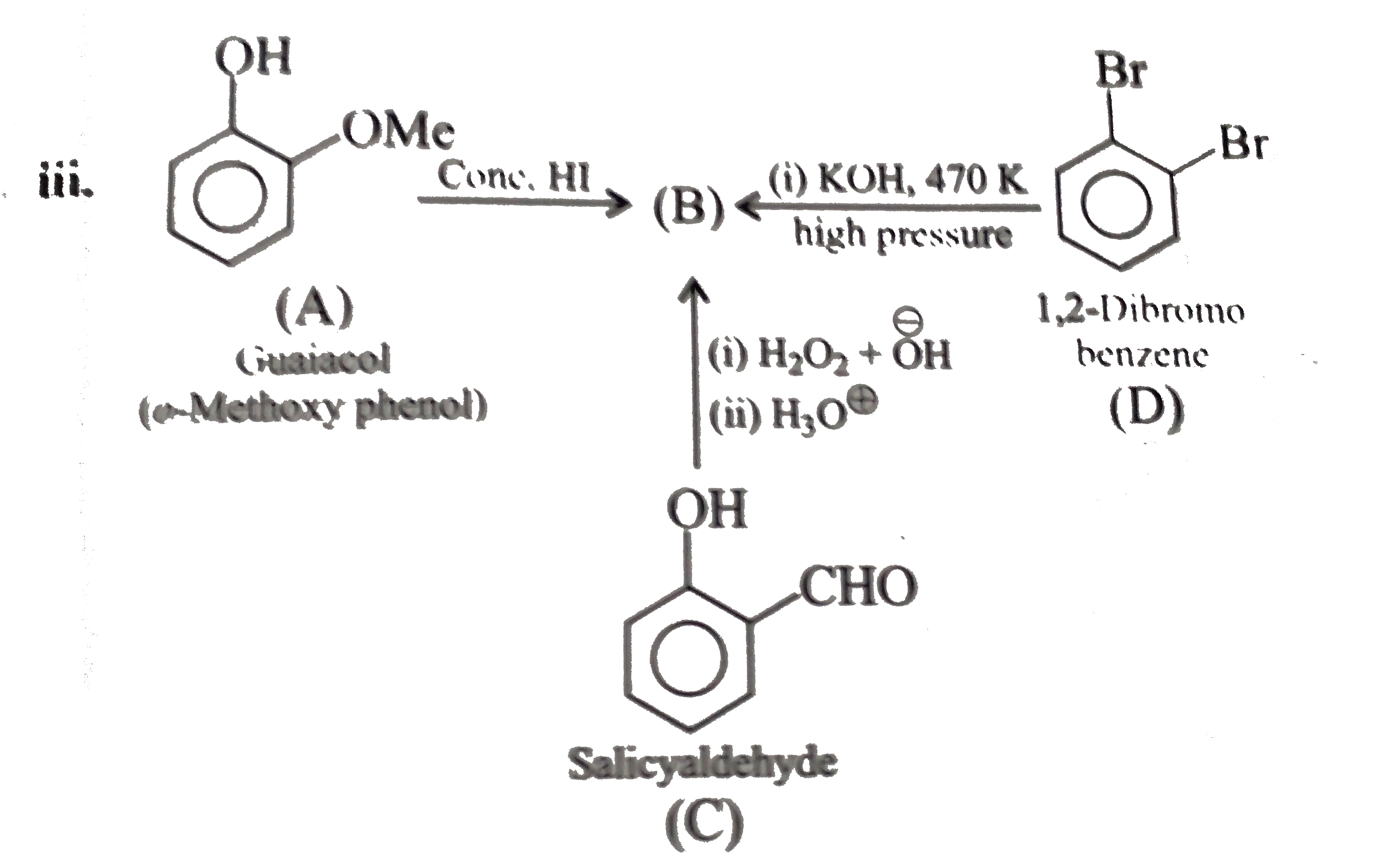
iv. 
v. 
vi. 
vii. 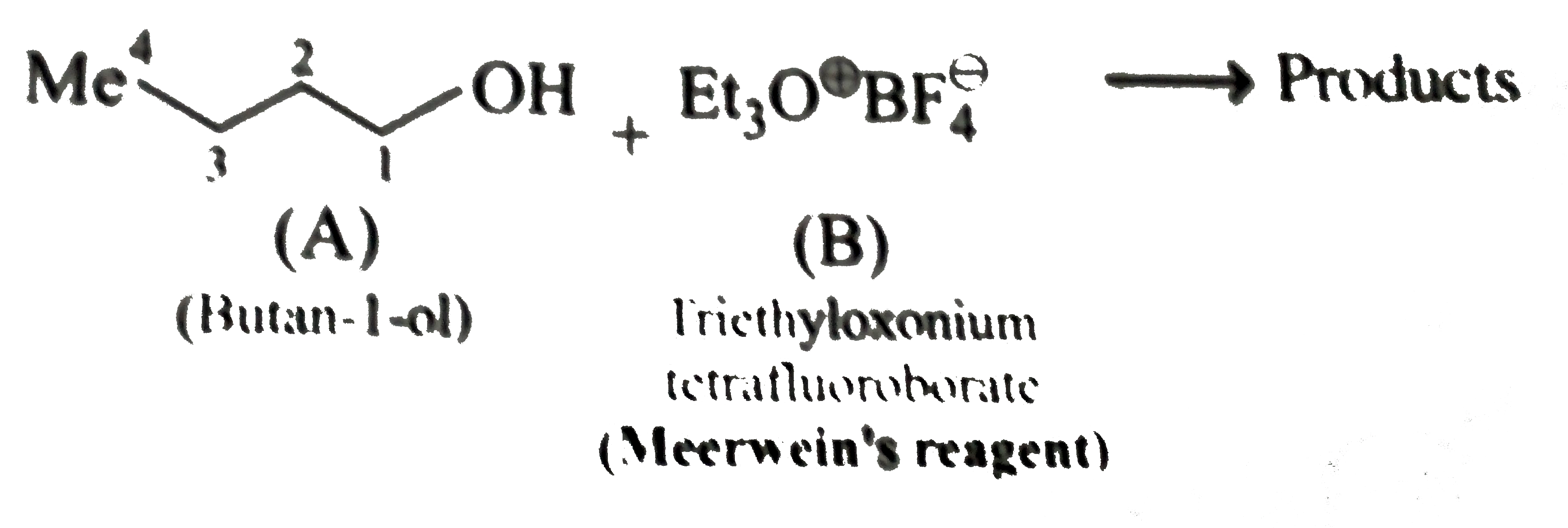
vii. 
ix. PhOMe(A) 1.BBr3−−−−→2.H2O Products
x. 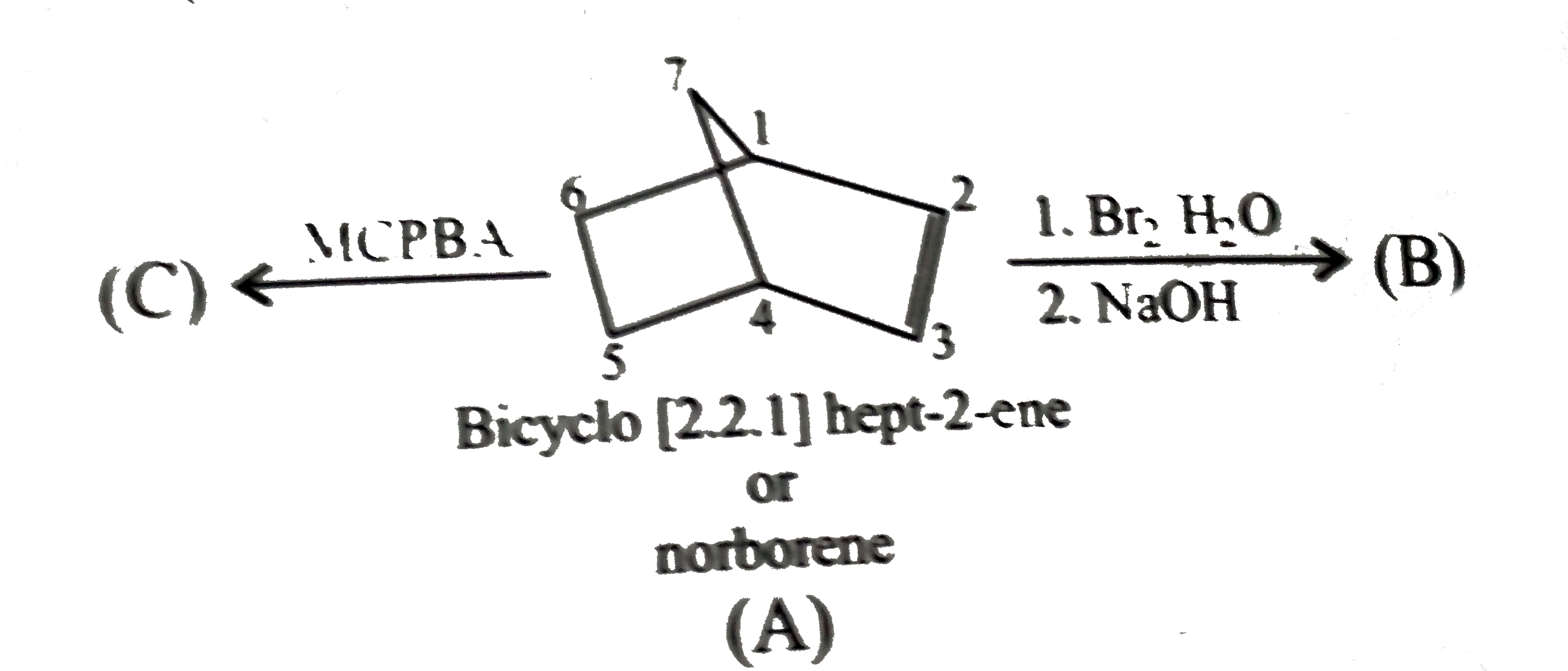
xi. 
xii. 
xiii. 
xiv. 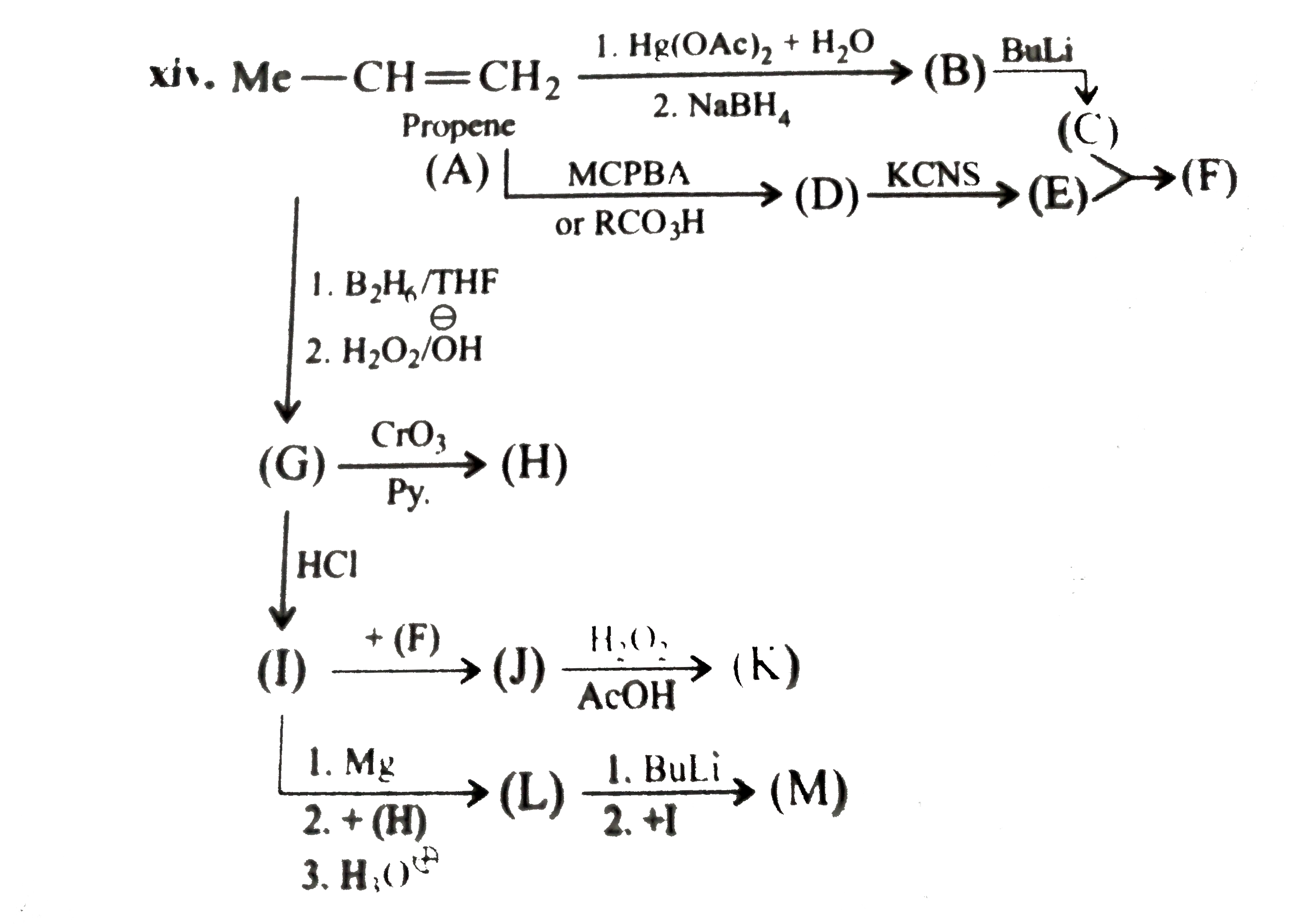
xv. 
xvi. 
xvii. 
xviii. 
xix. 
xx. 
xxi. 
xxii. 
xxiii. 
Text Solution
i. 
ii. 
iii. 
iv. 
v. 
The hemiacetal
 is formed reversibly, while electrophilic substitution of phenols by carbonyl compound in H⊕ gives irreversibly formed product (I) which futher reacts with phenol to give (C).
is formed reversibly, while electrophilic substitution of phenols by carbonyl compound in H⊕ gives irreversibly formed product (I) which futher reacts with phenol to give (C).

vi. 
vii. (B) (Trialkyloxonium salts) are good alkylating agents. SN2 reaction occurs with the nucleophile (BuOH) displacing Et2O (a good leaving group).

vii. 
There is no change in the configuration of (C), i.e., retention of the configuration occurs since (C−−−O) bond is not broken.
ix. BBr3 form complexes with the ether

It plays a role similar to H in HI.

The products are: MeBr+PhOH+H3BO3.
x. 
In (A), the axial-like encricled H atom hinder the endo approach (same side) by bulky MCPBA, so it approaches form other side, given exo-epoxide (C). The intermediate bromonium ion is also exo. It is opened by an attack with the (OH) endo, which can give only endo epoxide (B).
xi. 
xii. 
xiii. Commercial method for the synthesis of glycerol:

xiv. 
xv. 
xvi. 
xvii. Dialkyl lithium cuperate is less reactive than Grignard regent, hence (C=O) group is not reduced by R2CuLi.

xviii. 
xix.  xx.
xx. 
xxi. 
xxii. 
|
Topper's Solved these Questions
- ALCOHOL,PHENOL AND ETHERSBOOK - CENGAGE CHEMISTRYCHAPTER - ALCOHOL,PHENOL AND ETHERSEXERCISE - Exercises Concept Application
33 Videos
- ALCOHOL,PHENOL AND ETHERSBOOK - CENGAGE CHEMISTRYCHAPTER - ALCOHOL,PHENOL AND ETHERSEXERCISE - Exercises Linked Comprehension
60 Videos
- ALCOHOL,PHENOL AND ETHERSBOOK - CENGAGE CHEMISTRYCHAPTER - ALCOHOL,PHENOL AND ETHERSEXERCISE - Solved Examples
17 Videos
- ALIPHATIC AND AROMATIC ALDEHYDES AND KETONESBOOK - CENGAGE CHEMISTRYCHAPTER - ALIPHATIC AND AROMATIC ALDEHYDES AND KETONESEXERCISE - Archives Subjective
29 Videos
Similar Questions
Knowledge Check
HNO3/H2SO4−−−−−−−−→ANaOH−−−−−→433KB, B is
 A
A B
B C
C D
D
Identify the X and Y in the following reaction.
 , NaNO2,HCI−−−−−−−→H2O,5∘CXΔ−−→H2OYA
, NaNO2,HCI−−−−−−−→H2O,5∘CXΔ−−→H2OYA B
B C
C D
D
C6H6HNO3−−−→H2SO4XCl2−−−→FeCl3Y
In the above sequence Y can beAortho or p-ChloronitrobenzeneB3-NitrochlorobenzeneConly 4-NitrochlorobenzeneDequal mixture of all the above products
complete the following reactions:
a. C6H6+MeCOCIBenze≠(A) AICI3−−−→ B HNO3––––––H(2)SO4)→ C NaBH4−−−−→ D H2SO4−−−→Δ E
View Solutioncomplete the following reactions:
a. C6H6+MeCOCIBenze≠(A) AICI3−−−→ B HNO3––––––H(2)SO4)→ C NaBH4−−−−→ D H2SO4−−−→Δ E
b. (B) NaBH4−−−−→ F H2SO4−−−→Δ G HNO3−−−→H2SO4 H
View SolutionCH3CH=CH2HBr−−−−→Peroxide(A)Mg−−→(B)(1)CO2−−−−−−−−→(2)H2O/H+(C),(C) is
View Solution , CO2/NaOH−−−−−−−−−→H+(A)Acetic Anhydride−−−−−−−−−→Aspirin(B)
, CO2/NaOH−−−−−−−−−→H+(A)Acetic Anhydride−−−−−−−−−→Aspirin(B)
Product B is
View SolutionIdentify the product S in the following series of operations :
C2H2dil.H2SO4−−−−−−→Hg2+(P)K2Cr2O7/H+−−−−−−−−→(Q)CaCO3−−−→(R)Δ−−→(S)
View Solution
